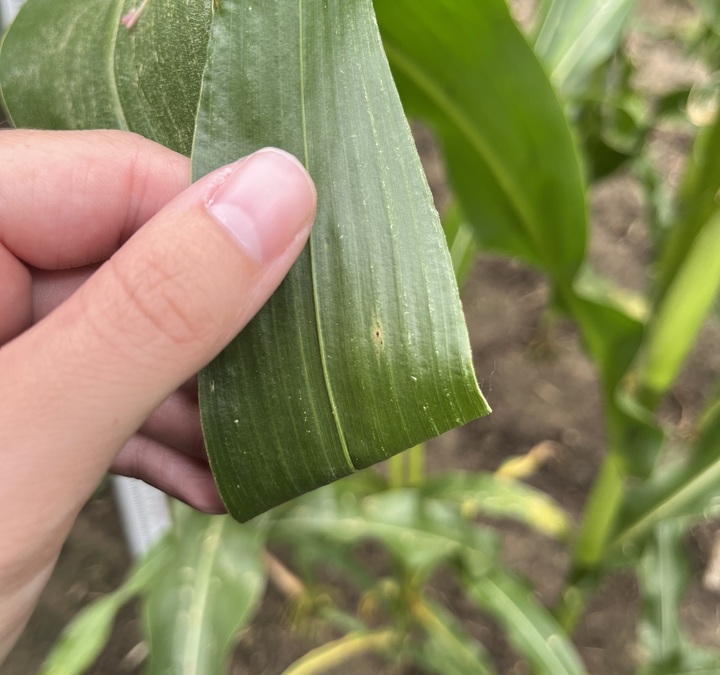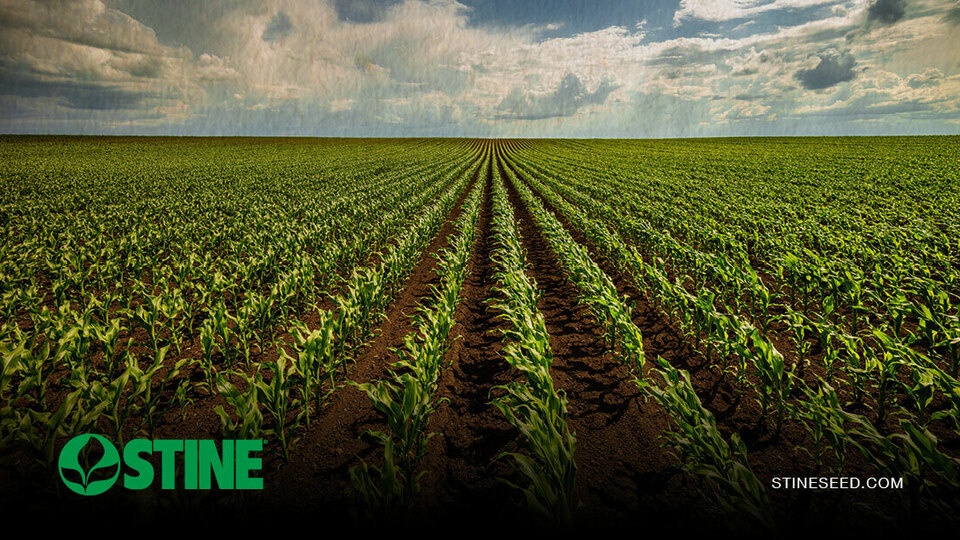Add tar spot to your list of foliar diseases to scout for this summer. Stine® Seed Company agronomists and sales reps are fielding calls on the disease and best strategies to combat it this growing season.

“Tar spot is popping up in areas of the Midwest, including Wisconsin, northern Iowa and Indiana,” says Faith Hedrick, Stine field agronomist. “Each year, we see it move into new areas of the Corn Belt, so growers need to understand what to look for and when to get out and scout, which is now.”
Here are some frequently asked questions our team receives about tar spot with responses from our agronomists and industry experts.
Where did tar spot originate?
Tar spot disease is caused by the fungus Phyllachora maydis, which likely originated in Mexico, South America, Central America and the Caribbean. It first appeared in the United States in 2015 in Indiana and Illinois but has since spread west.
What does tar spot do to corn?
Tar spot in corn can devastate a crop. The earlier it moves in during the season, the more it can spread and impact yields. However, yield loss is dependent on the percentage of damage to leaves. In the July 18, 2023, episode of the Stine Seedcast, Meaghan Anderson, the central Iowa field agronomist for Iowa State University Extension and Outreach, says if you have more than 5% tar spot coverage on the ear leaf at R5, it will likely impact yield. Anything less than 5% may not require a management strategy.
Purdue University Extension Entomology experts state, “Yield losses are often a result of reduced photosynthetic capacity (green leaf area) of the corn plant during grain fill resulting in poor grain fill, kernel abortion, and reduced kernel weight.” They add the integrity of the corn stalk can also be at risk, causing lodging issues later in the season if infected by tar spot disease. Yield losses can be upward of 60 bushels/acre in severely infected fields.
What are the early signs of tar spot?
Tar spot can be observed between the R3 and R6 stages of corn, typically around grain fill. However, growers have been finding it earlier each year.
“More and more we’re seeing tar spot take hold earlier in the season,” says Hedrick. “This is problematic because the earlier it’s present within a field, the more time it has to spread and damage these plants, and potentially cause yield losses.”
A good rule of thumb is to look for any stress to corn plants on field edges, right at field entrances. If you notice areas of concern, go in and scout the field. Anderson recommends starting in the lower to mid-canopy first, as spores usually splash up from the soil. This time of year, she says to look around the fifth or sixth leaf of the plant for signs of infection. Sometimes, those leaves may have died off from the disease, so it seems like you’re looking at the second or third leaves. Spores can also become airborne and affect the top of the canopy.

What does tar spot look like?
Tar spot symptoms can be detected on the leaves of the corn plant as stromata, or small, tannish brown to black, raised spots that are often irregular in shape. Anderson notes growers can confirm tar spot in two ways: if the stromata can’t be wiped off the leaf or if the underside of the leaf has similar discoloration to the top of the leaf.
“They’re like a very hard-shelled black lesion that bleeds through from the top of the leaf to the bottom of the leaf,” says Anderson. “That’s one of the keys to look for tar spot; if you flip that leaf over and see that black spot, that stromata, on both the upper and the lower end.”
According to the Crop Protection Network, while stromata are typically found on both the upper and lower sides of leaves, they can also be on the sheaths, tassels and husks.
In her conversation on the Stine Seedcast, Anderson notes, “Stromata can break open, and then they’ll release spores. Then those spores will get in the air or splash in raindrops and then move to new leaves and to new plants and elsewhere, perhaps to new fields. Then, when they get free moisture on the leaves, they can infect again, so we get this consistent spread as this disease moves through the season and the weather conditions are good for it.”
How do you treat tar spot?
Fungicides can be used as in-season tar spot treatments and applied with your regular foliar fungicides, anywhere from VT to R2. Anything applied after R3 will likely not benefit the crop.
“It’s also important to determine the severity of infestation before applying a fungicide for tar spot,” says Hedrick. “Agronomists or university extensions experts can help you decide whether a fungicide is warranted or if it’s not economically viable at this time of year.”
The Crop Protection Network has a Disease Severity and Insect Defoliation Training tool that can help growers confirm the disease and defoliation ratings of their corn crop.
In addition to considering fungicide treatments, it’s important to plan ahead.
“Hybrid selection is going to be the No. 1. best defense against a disease like this,” says Anderson.
Stine offers excellent hybrid options for the 2025 season that are rated against tar spot. Contact your local Stine sales rep for more details. If you suspect tar spot in your fields this summer, reach out to one of our agronomists or a local university extension specialist with questions.
Related Articles
-

Standing out by being shorter: All about short-stature corn
June 2025 in Agronomy
-

Stay ahead of midseason threats
June 2025 in Agronomy
-

Staying ahead with early-season crop scouting and weed management
June 2025 in Agronomy
-

Nutrient strategies to push yield this season
May 2025 in Agronomy





